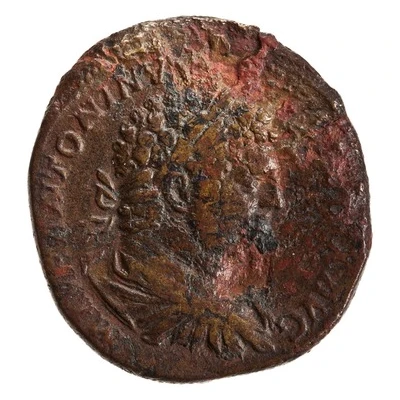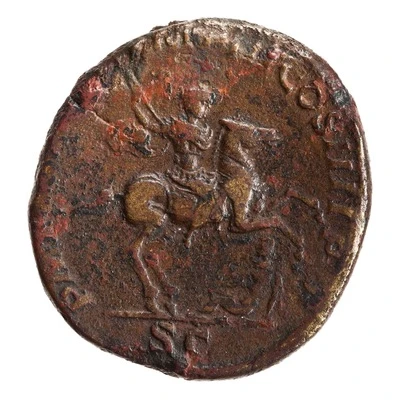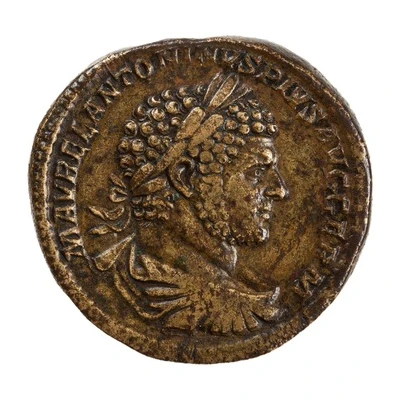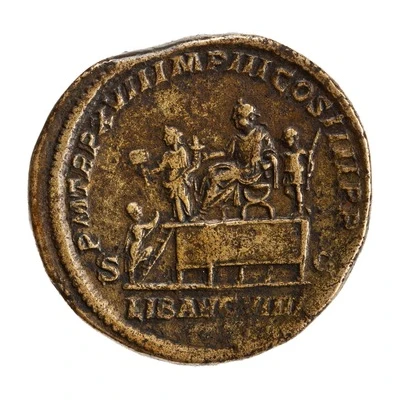Sestertius - Caracalla P M TR P XVII IMP III COS IIII P P S C
214 year| Bronze | - | - |
| Issuer | Rome › Roman Empire (27 BC - 395 AD) |
|---|---|
| Emperor | Caracalla (Marcus Aurelius Antoninus Caracalla) (198-217) |
| Type | Standard circulation coin |
| Year | 214 |
| Value | 1 Sestertius = ¼ Denarius |
| Currency | Denarius, Reform of Augustus (27 BC – AD 215) |
| Composition | Bronze |
| Shape | Round (irregular) |
| Technique | Hammered |
| Demonetized | Yes |
| Updated | 2024-10-06 |
| Numista | N#273907 |
|---|---|
| Rarity index | 100% |
Reverse
Caracalla, in military attire, on horse galloping right, brandishing javelin at prostrate foe.
Script: Latin
Lettering: P M TR P XVII IMP III COS IIII P P S C
Translation:
Pontifex Maximus, Tribunicia Potestate Septima Decima, Imperator Tertium, Consul Quartum, Pater Patriae. Senatus Consultum.
High priest, holder of tribunician power for the 17th time, supreme commander (Imperator) for the third time, consul for the fourth time, father of the nation. Decree of the senate.
Comment
Source:Online Coins of the Roman Empire (OCRE)
Interesting fact
One interesting fact about the Sestertius - Caracalla coin is that it features a unique reverse design that showcases the Roman Emperor Caracalla wearing a radiate crown, which symbolizes his divine status as a god-king. This imagery was used to promote the idea of the emperor's divine right to rule and to reinforce the idea that he was a powerful and benevolent leader. The coin's design also includes various other symbols and motifs that were significant in Roman culture, such as the she-wolf nursing Romulus and Remus, the twin brothers who founded Rome, and the goddess Victory holding a wreath and a palm branch. Overall, the coin's design reflects the rich cultural and historical heritage of the Roman Empire during the 3rd century AD.



